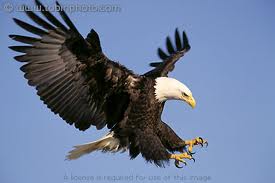2019 UPDATE:
LightSail Energy Storage and the Failure of the Founder Narrative
RELATED:

Entire Cities Could Run on Compressed Air
Clean Technica, 10 November 2012
The company LightSail Energy started out a few years ago with a student’s modest idea for a compressed air scooter, and now it has just raised $37.3 million in private funding to bring utility scale, compressed air energy storage to the market. That’s a big leap not only for the company but for compressed air technology itself, which has long been eyed for its clean energy potential. The problem has been to make the process efficient enough to deliver power at a commercial scale, so let’s take a look and see how LightSail solved the problem.
The Compressed Air Conundrum
As aptly described by writer Rachel Metz over at the MIT Technology Review, half of the compressed-air equation is simple enough from a clean energy perspective. You can use any form of alternative energy such as solar or wind to generate electricity, which in turn powers a motor that compresses air in a tank.
The hard part kicks in when you try to store large quantities of compressed air. Compression adds energy in the form of heat (almost 1,000 degrees centigrade, according to Metz) and that leads to enormous complications.
The Indian car manufacturer Tata Motors has apparently found at least a partial solution for small scale compressed air, but LightSail is going down an entirely different road.
LightSail’s Compressed Air Solution
Danielle Fong, Chief Scientist and co-founder of LightSail, is the former student who dreamed of a compressed-air scooter. She solved part of the problem by designing two related features into the system. One involves using mist to cool the air, and the other involves recapturing energy from the spent mist, in the form of heat.
According to Metz, Fong and her partners also identified a compound that could be used to manufacture tanks strong enough to store bulk quantities of compressed air above ground, in relatively inexpensive facilities, leading to the conclusion that “there are no technical barriers to building units large enough to power entire cities.”
As for whether it works or not, the new round of funding indicates a pretty high degree of confidence. It was spearheaded by legendary investor Peter Thiel of PayPal fame, and it included early investor Khosla Ventures as well as Bill Gates and Innovacorp among others.
Compressed Air Meets Wind Power
As a side note, compressed air technology is also expanding its role in the alternative energy field through the avenue of wind power.
One example is a compressed-air wind turbine that is designed like a funnel, with no exposed blades, in order to cut down risks for birds.
Along similar lines, an Air Force veteran has come up with a low cost wind turbine that uses a steady stream of compressed air from silos. The design is aimed at enabling small farmers on a budget to leverage their existing infrastructure, including silos and grid connections.
Alternative Energy and Democracy
Environmental and financial issues usually dominate the conversation about clean energy, but in announcing the new round of funding, LightSail CEO and co-founder Steve Crane teased out the truly transformative potential of alternative energy from a social and political perspective:
“We want to democratize energy – to enable renewable sources to supply energy on demand locally and at a lower cost than centralized fossil-fuel based generation.”
That’s the piece missing from the fossil fuel puzzle, the ability of a democratically organized community to make decisions about its primary sources of energy, just as it makes decisions about roads, zoning, schools, public safety and a host of other issues that are fundamental to the quality of life.
See Also:
Does abandoned Idaho mine hold key to energy independence?



